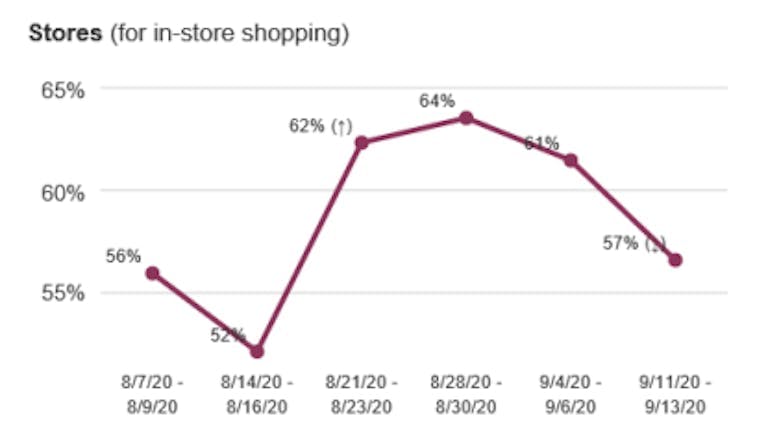What Are You Doing to Make Your Customer Experience Better?
As retail stores are struggling or shuttering, are you busy chasing a metric or two for your company? My colleague Nicole Garberg’s recent blog post examined some of the new COVID-era touchpoints that need to be measured. And Tammy Guevara’s blog post last week about lack of product availability in-store examines issues of brand substitutability. Both of these posts lead me to the same conclusion: the online retail experience is playing a much larger role in customer happiness than it ever has.
It’s essential for a company to deliver the promised product (hopefully in a timely manner), or at the very least, to provide accurate communication about the online order. Since March, you have probably been on the consumer side of this equation. Perhaps you’ve given a little more slack to companies with shipping delays and out of stock products. We learned that priority products for healthcare were taking priority early in lockdown and we started to question our own selfish need to get our 2-day guaranteed Amazon Prime package (did I really need a 500-piece puzzle ASAP during lockdown? Yes. Yes, I did.). A new consumer expectation has been shaped favoring the business. Consumers are now aware that products may not always be as available as they once were, and if they are it’s likely the shipping will take longer than pre-COVID days. But that may be about all we’re willing to concede with our purchases.
Consumers have had a heavy reliance on online shopping versus traditional retail throughout the pandemic, as we see willingness to visit a retail store decrease after a brief summer uptick for back-to-school shopping (data courtesy of Big Village’s COVID-19 Tracker).

And this week’s tracker data shows increasing intent to use online shopping for holiday purchases:

As higher proportions of business revenue are online, social media continues to play an oversized role in shaping consumer brand perceptions. Social media and brand perception are now inextricably linked. In late Spring, I was scrolling through my Instagram feed and noticed one of my favorite women’s clothing brands’ account taking a turn for the worse. I was regularly seeing the brand’s post overrun with dissatisfied customer complaints, in detail, that in pre-COVID days would have made me cringe. The negative customer experience on full display continues today.
Comments tend to consist of only polar opposites: “I love” [post’s shirt/pants/scarf/shoes] with many fun, cute emojis. Or more regularly now: “Company X your customer service is horrible! I ordered this and” [insert a litany of issues that went wrong]. There are comments about wrong orders, incomplete orders, never receiving orders, customer service rep lack of knowledge, etc. I sympathize with the social media/marketing person handling this account, but honestly, I am also struck by the fact that it has been months of the same bad experience being aired on the fun, inspirational Instagram account (this isn’t Twitter!). The upbeat persona providing reassurance on behalf of the company is okay, but continually shepherding every complaint to “We’re so sorry to hear that, please DM us to resolve it right away!” seems tone-deaf and almost automated these days. It also doesn’t come close to addressing the other difficult and relevant comments about in-store staff racially profiling customers or lack of social responsibility for fairly paying garment workers. This is no longer just about a problem with an order. Consumers are smart and insisting upon making real change happen in 2020, calling out socially irresponsible brands, and rolling with the social justice tide happening in our real lives.
The company is a well-established, aspirational brand that I’ve always made time to visit when traveling on business. I mean in those good old days of business travel and being around thousands of others in public, remember those? I am not sure how the company is weathering this storm of 2020 in general, with the onslaught of social media ranting and finger-pointing. I’m expecting to see this company added to the list of business closures every morning.
For those colleagues in marketing and insights who think you can control your brand narrative, you probably agree that consumers have a stronger impact than ever on social media. They are calling the shots and leaving lasting impressions on your brand social media posts. What are you doing to make the customer experience better?
Reach out to Big Village’s team of CX experts and let us help you with the new-to-me CX touch-points or a KDA refresh. Perhaps your pre-COVID key driver in CX was quality or variety of unique clothing, but after a few concentrated months of all online retail it may have changed to customer service (or the lack thereof). In this crucial time of keeping businesses afloat your key driver could be the tipping point to the end of its brick-and-mortar presence, or even its total demise.
Written by Leslie Rich, Vice President at Big Village Insights.










